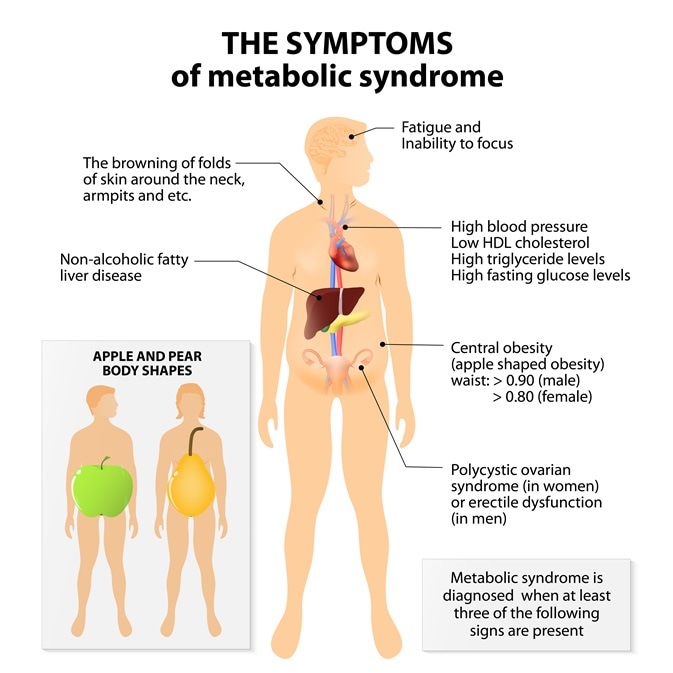With over two-thirds of UK adults classified as overweight or obese, it is no surprise that a substantial proportion of clients that come for personal training fit into this category. Initially, they’ll want to lose weight and improve their fitness; two easily achievable goals if they stick to a healthy diet and exercise plan.
While fitness professionals will invest most of their time working with these clients, they should actively keep an eye out for a group of individuals who are often overlooked by health and fitness professionals. These are the “skinny fats”; men and women who look fit and healthy on the outside, but who may have serious health problems brewing from within.
Weighing in
Typically, skinny fats – medically known as metabolically obese normal weight (MONW) individuals – partake in little or no exercise, eat a diet high in sugary, processed foods and have very little muscle definition. But because they aren’t classified as overweight, no-one questions their health and many people envy their fast metabolisms and tiny frames.
In the UK, overweight and obesity is a major public concern – it is thought that by 2025, 47% or males and 36% of females will be obese. People who fall into this category are more likely to develop health problems later in life, such as heart disease, type 2 diabetes, stroke and certain cancers. To be classified as overweight or obese, you need to have a body mass index (BMI) of over 25 or 30, respectively. This is calculated using a person’s weight and height, and is commonly used in the medical profession for assessing current and future health risk.
Anyone with a BMI of 18.5 to 25 is considered healthy by many medical professionals. Their risk for developing metabolic diseases is also thought to be lower. While there are many individuals who fall into this category that are healthy, research suggests that solely using BMI as an indicator of health could be misleading.
How much fat?
One useful measure of body composition is a person’s body fat percentage. Quite simply, this is the percentage of the body made up of fat. Athletes or individuals who have a lot of muscle mass will often have a falsely high BMI, but a low body fat percentage. This is because BMI doesn’t account for their increased weight due to the composition of their muscles.
By contrast, individuals with a normal BMI may be found to have an unusually high body fat percentage. These are the MONW individuals, and this is a straightforward way to scientifically detect them. They have little of what we consider to be good for you (muscle mass and bone density) and lots of what we consider to be bad (visceral fat).
Is “skinny fat” really that bad?
Despite looking slim and healthy, MONW individuals are often deficient in certain vitamins due to a poor diet, which can cause fatigue and low concentration levels. They also show traits typically seen in diabetics, such as high blood sugar levels, low cholesterol, inflammation and high blood pressure. Worryingly, researchers have found that people who develop diabetes who are MONW have a higher mortality rate than obese diabetics. However, because these individuals are thin, their symptoms often go undetected until it is too late.
How to spot a metabolically obese normal weight individual
For fitness professionals, MONW individuals are often hard to spot. This is because, typically, they avoid the gym or any kind of physical activity. While this is an obvious problem for us, it is still important to know the trademarks of a MONW person.
Easily identifiable signs include:
- An aversion for any kind of physical exercise
- A diet high in sugary or processed foods
- Constant sugar highs and lows
- Bouts of fatigue, low energy and difficulty concentrating or focusing for extended periods of time
- Avoiding food high in protein (not necessarily on purpose)
- A belly that is slightly bigger and out of proportion with the rest of the body
Prescribing a cure
Thankfully, being metabolically obese but normal weight isn’t a disease and isn’t a permanent state. It can easily be altered with a few simple lifestyle changes, and this is where we as fitness professionals come in. Unlike many clients, MONW individuals don’t need to lose weight. Their goal is to change their body composition through safe, effective exercise and alterations in their current diet. This can be achieved through a mix of aerobic and resistance training.
For some, starting out in a gym can be daunting and they will likely make a beeline for the cardio equipment, avoiding the weights section altogether. While aerobic activity should play a small part in their training programme, encouraging the use of resistance machines and weights is essential for building muscle mass. The first few sessions will be the most important. They will need reassurance, guidance and ultimately your knowledge and support. Make sure they understand the importance of supporting an active lifestyle with a balanced diet and the effects that highly processed foods can have on their body.
As fitness professionals we play a key role in helping fight obesity in this country. Although it has taken a while for the dangers associated with being metabolically obese but normal weight to be recognised, the phenomenon is gaining more attention and the dangers of metabolic obesity are becoming apparent. Hopefully we’ll see more work being done to promote health from the inside out in the future. One such place is fitness education and this is where leading provider of personal training courses HFE is taking charge with their Master PT package. This package combines the standard personal training qualifications, with exercise referral, the Level 4 Obesity and Diabetes certificate and a whole host of extras.








